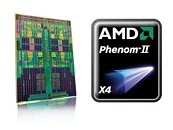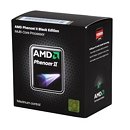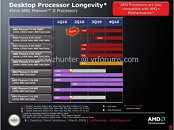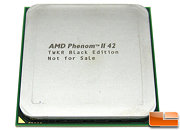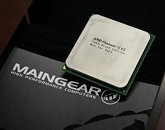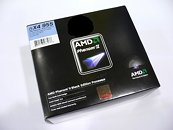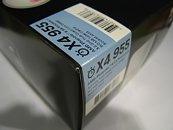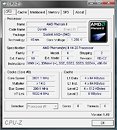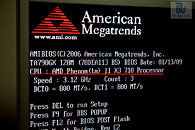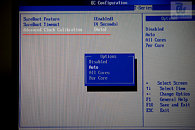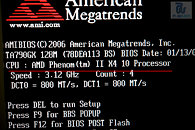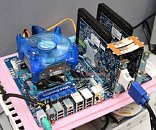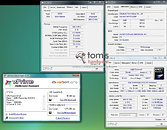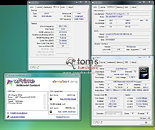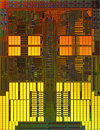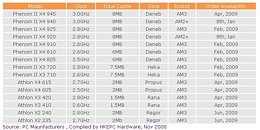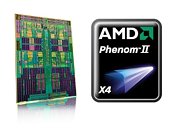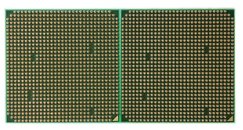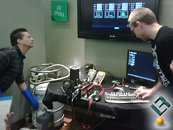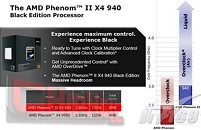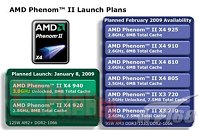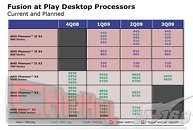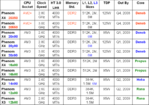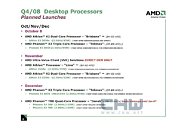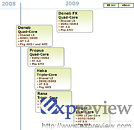Apr 18th, 2025 16:20 EDT
change timezone
Latest GPU Drivers
New Forum Posts
- How to relubricate a fan and/or service a troublesome/noisy fan. (242)
- It's happening again, melting 12v high pwr connectors (1027)
- RX 9000 series GPU Owners Club (393)
- Can Intel recover in DYI market anytime soon? (11)
- Place your bets, what node will rtx 6000/RDNA 5(UDNA 1?) use (8)
- TPU's Nostalgic Hardware Club (20257)
- GPU Pricing and Performance (15)
- What are you playing? (23396)
- Spoofer Modified SMBIOS/BIOS – Need Help Restoring Original Motherboard Info (TUF GAMING B550-PLUS WiFi II) (2)
- Tried installing 576.02 - installer window disappears (20)
Popular Reviews
- ASUS GeForce RTX 5060 Ti TUF OC 16 GB Review
- NVIDIA GeForce RTX 5060 Ti PCI-Express x8 Scaling
- Palit GeForce RTX 5060 Ti Infinity 3 16 GB Review
- G.SKILL Trident Z5 NEO RGB DDR5-6000 32 GB CL26 Review - AMD EXPO
- ASUS GeForce RTX 5060 Ti Prime OC 16 GB Review
- Teevolution Terra Pro Review
- MSI GeForce RTX 5060 Ti Gaming OC 16 GB Review
- Zotac GeForce RTX 5060 Ti AMP 16 GB Review
- MSI GeForce RTX 5060 Ti Gaming Trio OC 16 GB Review
- ASUS GeForce RTX 5080 TUF OC Review
Controversial News Posts
- NVIDIA GeForce RTX 5060 Ti 16 GB SKU Likely Launching at $499, According to Supply Chain Leak (182)
- NVIDIA Sends MSRP Numbers to Partners: GeForce RTX 5060 Ti 8 GB at $379, RTX 5060 Ti 16 GB at $429 (127)
- Nintendo Confirms That Switch 2 Joy-Cons Will Not Utilize Hall Effect Stick Technology (105)
- NVIDIA Launches GeForce RTX 5060 Series, Beginning with RTX 5060 Ti This Week (101)
- Over 200,000 Sold Radeon RX 9070 and RX 9070 XT GPUs? AMD Says No Number was Given (100)
- Nintendo Switch 2 Launches June 5 at $449.99 with New Hardware and Games (99)
- Sony Increases the PS5 Pricing in EMEA and ANZ by Around 25 Percent (85)
- NVIDIA PhysX and Flow Made Fully Open-Source (77)
News Posts matching #Deneb
Return to Keyword Browsing
AMD Readies 3.70 GHz Phenom II X4 980 Black Edition Processor
AMD is looking to give its Phenom II series a finale, with a new quad-core Phenom II X4 model, the Phenom II X4 980 Black Edition. The new chip will be clocked at 3.70 GHz out of the box (18.5 x 200 MHz). It achieves this speed while staying within the 125W TDP envelope. Based on the 45 nm "Deneb" silicon, the X4 980 BE features four x86-64 cores with 512 KB dedicated L2 cache each, and a 6 MB shared cache. Compatible with AM3 and AM2+ sockets, the chip packs a dual-channel memory controller that supports DDR3-1333 MHz or DDR2-1066 MHz memory standards. AMD will unveil the new chip soon, as the company gears up to launch next-generation chips in June.

AMD Readies Faster Phenom II X6 Models, New Fast Quad-Core Chip
After AMD's recent mass-release of Athlon II and Phenom II series processors that included the Phenom II X6 1070T Black Edition priced at around $250, AMD is working on a new flagship processor that's even faster than the Phenom II X6 1090T Black Edition (the current flagship), given the model number Phenom II X6 1100T Black Edition (surprise!), and as always, it's yet another speed-bump. This chip is based on the 45 nm Thuban die, and is clocked a whole 100 MHz faster, at 3.30 GHz, with a Turbo Core frequency of 3.70 GHz. Surprisingly, it retains its TDP rating of 125W. As with every other chip based on this die, it features six cores with 128 KB L1, 512 KB L2 dedicated caches, and 6 MB L3 shared cache, it comes in the AM3 package and is backwards compatible with AM2+, supporting dual-channel DDR3-1333 and DDR2-1066 memory standards.
The 1100T Black Edition isn't the only new Phenom II series member down the line, there's the Phenom II X6 1065T (2.90 GHz, non-BE, 3.40 GHz Turbo); the slower Phenom II X6 1045T (2.50 GHz, non-BE, 3.20 GHz Turbo), and the company's next fastest quad-core chip, the Phenom II X4 975 (3.60 GHz, Deneb). It's not known whether the X4-975 is a Black Edition SKU.
The 1100T Black Edition isn't the only new Phenom II series member down the line, there's the Phenom II X6 1065T (2.90 GHz, non-BE, 3.40 GHz Turbo); the slower Phenom II X6 1045T (2.50 GHz, non-BE, 3.20 GHz Turbo), and the company's next fastest quad-core chip, the Phenom II X4 975 (3.60 GHz, Deneb). It's not known whether the X4-975 is a Black Edition SKU.

New Roadmap Shows AMD's Desktop Processor Portfolio for Rest of 2010
A set of new slides by AMD to sections of the industry spills the beans on AMD's processor offer outlook for perhaps the rest of the year. It shows AMD to maintain focus on value-oriented models that etch away Intel's market share on grounds of price/performance, while the higher-end of the spectrum keeps up with the latest technologies including the industry-wide advent of the six-core processor era, as well as new power-state management technologies such as TurboCore, which steps up clock speeds of certain cores of the processors while powering down others, which the load is low or less-parallel.
Front-line processor lineups include the Phenom II X6, and Phenom II X4, including a new T X4 series that includes TurboCore support. AMD's transition towards these chips from the existing Deneb-based quad-core ones starts within this quarter lasting throughout Q2 and part of Q3 2010. It includes Phenom II X4 960T, a 3.00 GHz (3.40 GHz turbo) chip based on the Zosma die. It goes up with the Phenom II X6 1035T, a six-core chip clocked at 2.60 GHz (3.10 GHz turbo). A notch higher up is the Phenom II X6 1055T, clocked at 2.80 GHz (3.30 GHz turbo), which comes in 95W and 125W variants. At the top is the Phenom II X6 1090T Black Edition, an overclocker-friendly chip that runs at 3.20 GHz (3.60 GHz turbo). A little later in Q3, AMD will add in the Phenom II X6 1075T, clocked at 3.00 GHz (3.50 GHz turbo).
Front-line processor lineups include the Phenom II X6, and Phenom II X4, including a new T X4 series that includes TurboCore support. AMD's transition towards these chips from the existing Deneb-based quad-core ones starts within this quarter lasting throughout Q2 and part of Q3 2010. It includes Phenom II X4 960T, a 3.00 GHz (3.40 GHz turbo) chip based on the Zosma die. It goes up with the Phenom II X6 1035T, a six-core chip clocked at 2.60 GHz (3.10 GHz turbo). A notch higher up is the Phenom II X6 1055T, clocked at 2.80 GHz (3.30 GHz turbo), which comes in 95W and 125W variants. At the top is the Phenom II X6 1090T Black Edition, an overclocker-friendly chip that runs at 3.20 GHz (3.60 GHz turbo). A little later in Q3, AMD will add in the Phenom II X6 1075T, clocked at 3.00 GHz (3.50 GHz turbo).

AMD Readying Low Cost ''Suzuka'' Opteron Processors
Over a month into the release of its flagship enterprise processor, the six-core Opteron codenamed "Istanbul", the company expressed plans to roll out another line of Opteron chips, this time targeting the cost-effective SME market, and not exactly power scaling and parallelism offered by its two-socket and multi-socket capable Opteron 2000 and Opteron 8000 series. The new quad-core processor will be codenamed "Suzuka", and will be made for single-socket systems. For this reason, it will not use the 1207-pin Socket F, but rather the AM3 socket, and will be compatible with existing AM2(+) motherboards that support the Budapest quad-core chip (single socket version of Barcelona).
Suzuka shares the same die design as Shanghai (Opteron) and Deneb (Phenom II). It features four x86-64 processing cores on a monolithic die, with 512 KB of L2 cache per core, and a shared 6 MB L3 cache. Dual DDR2/DDR3 memory controllers work in ganged or unganged dual-channel modes. Currently three models are ready, the 2.50 GHz Opteron 1381, 2.70 GHz Opteron 1385, and 2.90 GHz 1389. These chips are specified to come with system bus speeds of 2200 MT/s (HyperTransport bus actual speed of 1100 MHz). All three models come with a rated TDP of around 115 W, and is built on the 45 nm SOI process. Opteron 1381 is priced at US $189, Opteron 1385 at $229, and Opteron 1389 at $269.
Suzuka shares the same die design as Shanghai (Opteron) and Deneb (Phenom II). It features four x86-64 processing cores on a monolithic die, with 512 KB of L2 cache per core, and a shared 6 MB L3 cache. Dual DDR2/DDR3 memory controllers work in ganged or unganged dual-channel modes. Currently three models are ready, the 2.50 GHz Opteron 1381, 2.70 GHz Opteron 1385, and 2.90 GHz 1389. These chips are specified to come with system bus speeds of 2200 MT/s (HyperTransport bus actual speed of 1100 MHz). All three models come with a rated TDP of around 115 W, and is built on the 45 nm SOI process. Opteron 1381 is priced at US $189, Opteron 1385 at $229, and Opteron 1389 at $269.

Phenom II Black Edition TWKR 42 Unveiled
NDA has been lifted off AMD's newest processor for serious overclocking, the Phenom II Black Edition TWKR 42. While this processor isn't meant to be an out of the box high-speed performer, it caters specifically to those who know (TWK) the inside outs of overclocking. Hence, it comes with a speed of 2.00 GHz, but with an unlocked multiplier, high-leakage silicon, and a significantly higher overclocking headroom compared to other consumer-grade chips AMD offers. Currently AMD has only 100 of these ready to sell.
Legit Reviews is one of the first sites to review this chip, and adds an interesting list of myth busters to go with it. The chip is based on a cherry-picked high quality yield of Deneb C2 core. It comes with a vCore value of 1.44 V out of the box, and lets the overclocker decide which bus-multiplier, frequency, and voltage value to use. It comes in an exclusive jewel-case from AMD. Using air-cooling by an XIGMATEK HDT-S1283, the reviewer was able to reach 4.00 GHz on the air and more than 5.90 GHz using liquid-nitrogen cooling.
Legit Reviews is one of the first sites to review this chip, and adds an interesting list of myth busters to go with it. The chip is based on a cherry-picked high quality yield of Deneb C2 core. It comes with a vCore value of 1.44 V out of the box, and lets the overclocker decide which bus-multiplier, frequency, and voltage value to use. It comes in an exclusive jewel-case from AMD. Using air-cooling by an XIGMATEK HDT-S1283, the reviewer was able to reach 4.00 GHz on the air and more than 5.90 GHz using liquid-nitrogen cooling.

AMD Readying Phenom II X4 965
Following its roadmap, AMD is continuing with new processor releases based on the Deneb core with increases in the multiplier. The Phenom II X4 965 comes with a clock speed of 3.40 GHz, and an FSB multiplier of 17.0x, giving it a 200 MHz increase over the 955 Black Edition. It is not known if 965 comes in a Black Edition branding, one which could determine its pricing. If launched as a Black Edition (version with unlocked bus multiplier), It could either be priced above the 955, or could displace it and position itself at US $249.99. Without the BE branding it could be priced slightly lower. The new chip will be based on the AM3 package, supporting DDR3 1333 MHz and DDR2 1066 MHz. It comes at a time when AMD is releasing the RS880-based AMD 785G chipset. AMD will dispatch samples of the Phenom II X4 965 starting next week.

AMD Preparing Phenom II TWKR for Enthusiast Market
AMD tasted a bit of success with its Phenom II series of processors, which reflected in recent market share figures, where the company's share grew by around 5 percent, despite a fall in sales throughout the PC processor industry. Leading its pack currently, is the Phenom II X4 955 Black Edition, which holds a full-featured 45 nm Deneb core with unlocked bus multiplier, and AM3 platform support. It seems like AMD isn't stopping at this. The company is preparing a new model targeted at the enthusiast segment, called Phenom II TWKR ("tweaker").
High-end PC manufacturer Maingear PC has reportedly received this chip in a display model form, and looks forward to incorporating it in its lineup of PCs. Very little is known at this point in time, about this chip, beyond the point that it will provide better clock-speeds compared to the Phenom II X4 955. We can tell that it retains the AM3 socket package from the looks of it, and comes in a pretty jewel-case. AMD is yet to announce the chip, or disclose more about how it plans to sell it, and at what price.
High-end PC manufacturer Maingear PC has reportedly received this chip in a display model form, and looks forward to incorporating it in its lineup of PCs. Very little is known at this point in time, about this chip, beyond the point that it will provide better clock-speeds compared to the Phenom II X4 955. We can tell that it retains the AM3 socket package from the looks of it, and comes in a pretty jewel-case. AMD is yet to announce the chip, or disclose more about how it plans to sell it, and at what price.

Phenom II X4 955 Inches Toward April 20 Launch
AMD is attempting to set its record straight with the Phenom II series of 45 nm desktop processors. The company had started off its Dragon desktop platform with the introduction of its flagship CPU, the Phenom II X4 940. This processor however, is not compliant with the AM3 socket, and will not support DDR3 memory, unless an AM3 socket motherboard can provide DDR2 memory support. Come April 20, and AMD will have released its newest processor: Phenom II X4 955 Black Edition. Based on the 45 nm Deneb core, this processor supports AM3 socket motherboards, and DDR3 memory. It features a core clock speed of 3.20 GHz (16.0 x 200 MHz), 512 KB of L2 cache per core, and 6 MB of L3 cache. It is overclocker-friendly thanks to its unlocked bus multiplier, and the "massive headroom" AMD has been brandishing lately.
One of our sources from Hong Kong was able to make an early-purchase this processor in its retail "processor in a box" (PIB) package (marked with the OPN HDZ955FBGIBOX), from the Golden Computer Parts Center, who took a few snaps of the package. It could be bought for around HKD 2170 (US $280).
One of our sources from Hong Kong was able to make an early-purchase this processor in its retail "processor in a box" (PIB) package (marked with the OPN HDZ955FBGIBOX), from the Golden Computer Parts Center, who took a few snaps of the package. It could be bought for around HKD 2170 (US $280).

Phenom II X4 800 Series Can Address Full 6 MB L3 Cache
While AMD played smart in diverting all its engineering resources in designing only one core: the Deneb / Shanghai, and then carving out umpteen SKUs out of them based on disabling cores, and/or setting L3 cache amounts, its implementation seems to be shoddy, to the least. Weeks ago, a Korean enthusiast found an easy way to unlock the factory-disabled fourth core on some Phenom II X3 (Heka) processors. A fresh report suggests that it is possible to enable the complete L3 cache on the Phenom II X4 800 series processors.
The series is AMD's line of Deneb-based 45 nm quad-core processors with 2 MB of L3 cache disabled, leaving 4 MB that can be addressed by the processor. An enthusiast found the Phenom II X4 810 processor to be spontaneously able to address 6 MB of L3 cache, when used on an ASRock AOD790GX /128M motherboard. The most likely cause of this could be "poorly-coded" motherboard BIOS that is able to see the Deneb core "as is". The motherboard was using BIOS version 1.40, that adds Phenom II support. The additional cache was found to have a positive impact on system performance. Beyond that, the enthusiast did not provide an explanation. After clearing the CMOS of the motherboard, it was able to correctly detect the processor with its intended specifications.
The series is AMD's line of Deneb-based 45 nm quad-core processors with 2 MB of L3 cache disabled, leaving 4 MB that can be addressed by the processor. An enthusiast found the Phenom II X4 810 processor to be spontaneously able to address 6 MB of L3 cache, when used on an ASRock AOD790GX /128M motherboard. The most likely cause of this could be "poorly-coded" motherboard BIOS that is able to see the Deneb core "as is". The motherboard was using BIOS version 1.40, that adds Phenom II support. The additional cache was found to have a positive impact on system performance. Beyond that, the enthusiast did not provide an explanation. After clearing the CMOS of the motherboard, it was able to correctly detect the processor with its intended specifications.

Phenom II X3 from Week 51 Batch Successfully Unlocks Fourth Core, AMD Steps In
The ability of AMD's Phenom II X3 processors dole out an additional core thanks to flaws in BIOS programming, has been one of the most interesting events in the computer enthusiast industry this month. A simple toggle of an option would unlock the disabled core, appreciating the value of the processor. It was earlier known that only chips belonging to 0904 (fourth week of 2009) batch of the processors would be able to respond to the mod successfully, but now, a fresh finding by German website Hartware.net suggests that even chips made in the 51st week of 2008 batch responded to the mod, and the fourth core could be enabled. Hartware.net used Biostar's TA790GX A2+ motherboard for the feat.
Meanwhile, the only entity that stands to lose due to this rather bizarre "phenomenon" has stepped in. AMD has reportedly requested motherboard manufacturers to not to release motherboards with the "buggy" BIOS, and to devise a fix for the issue immediately. Manufacturers are requested to release fixed BIOS updates. Evidently Phenom II X3 could cannibalize higher quad-core chips by the firm. The company is yet to release an DDR3-supportive quad-core chip based on the Deneb core with the entire 6 MB cache enabled.
Meanwhile, the only entity that stands to lose due to this rather bizarre "phenomenon" has stepped in. AMD has reportedly requested motherboard manufacturers to not to release motherboards with the "buggy" BIOS, and to devise a fix for the issue immediately. Manufacturers are requested to release fixed BIOS updates. Evidently Phenom II X3 could cannibalize higher quad-core chips by the firm. The company is yet to release an DDR3-supportive quad-core chip based on the Deneb core with the entire 6 MB cache enabled.

Phenom II X3 Can be Unlocked to Phenom II X4?
It is a well-known fact that AMD has been carving out triple-core and dual-core Phenom/Phenom II series processors out of complete Agena/Deneb dice with one or two cores disabled. In a fresh revelation, a Korean enthusiast claims to have discovered that it is rather easy to unlock the disabled core on Phenom II X3 processors, provided the motherboard supports the Advanced Clock Calibration (ACC) feature that is meant to enhance overclocking using AMD's Overdrive software. The enthusiast claims the soft-mod to have worked in his/her case, where a Phenom II X3 710 was paired with a Biostar TA790GX 128M motherboard. The CPU was overclocked to 3.12 GHz, with a vCore setting of 1.37 V.
The method employed: Set the appropriate BIOS setting for the Advanced Clock Calibration feature to "Auto", save settings and restart. The system will be able to deal with the disabled core, and off load some work to it. The processor with the "additional" core was tested to be Prime95 stable and was able to boost 3DMark06 CPU score by as much as 1,000 points. Let the screenshots below speak for themselves:
The method:
The method employed: Set the appropriate BIOS setting for the Advanced Clock Calibration feature to "Auto", save settings and restart. The system will be able to deal with the disabled core, and off load some work to it. The processor with the "additional" core was tested to be Prime95 stable and was able to boost 3DMark06 CPU score by as much as 1,000 points. Let the screenshots below speak for themselves:
The method:

First AMD Benchmarks With DDR3 Memory Posted
Better late than never, AMD is embracing the DDR3 memory standard. Its newest desktop CPU socket, the AM3, connects the processor to dual-channel DDR3 memory. Initial specifications about AMD's processors on the new socket suggest that DDR3 1333MHz (PC3-10600) will be held as the memory standard the integrated memory controllers on AMD's processors support. The far-east team of Tom's Hardware posted the first series of benchmarks of a Phenom II AM3 processor, when paired with DDR3-1333. The benchmarks featured Gigabyte's MA790FXT-UD5P motherboard along with Corsair's dual-channel DDR3-1333 kit running at DRAM timings of 9-9-9-24. The CPU-Z window also shows that the memory modules are running unganged, meaning that the two memory controllers of the Deneb core are independent, with each controller handling a 64-bit wide memory channel. This state is somewhat comparable to that of single-channel memory, except that multi-threaded applications will still be able to independently address memory on each channel, utilizing all the bandwidth on offer.
At the center of the test-bench was the AMD Phenom II X4 910, the company's first flagship quad-core AM3 processor. The X4 910 features a default clock speed of 2.60 GHz. The same chip was tested in two settings: default clock-speeds, and overclocked to 3.12 GHz (240 x 13.0 @ default vCore). The screenshots below show the test results for WPrime. The overclocked chip scored a crunch-time of 46.613 s (1M). The overclock did not affect SuperPi at all, with insignificant differences in the scores between the two. PC Mark 05 got a decent boost, while 3DMark06 didn't. Memory bandwidth and latency tests showed something strange, with the overclocked CPU (in effect memory) turning up with lesser latency (while normally, increase in clock speeds tend to step up latencies). The tests show that there are increments in performance with the use of DDR3 memory, though they are merely proportional to the clock speeds the memory is running at.
At the center of the test-bench was the AMD Phenom II X4 910, the company's first flagship quad-core AM3 processor. The X4 910 features a default clock speed of 2.60 GHz. The same chip was tested in two settings: default clock-speeds, and overclocked to 3.12 GHz (240 x 13.0 @ default vCore). The screenshots below show the test results for WPrime. The overclocked chip scored a crunch-time of 46.613 s (1M). The overclock did not affect SuperPi at all, with insignificant differences in the scores between the two. PC Mark 05 got a decent boost, while 3DMark06 didn't. Memory bandwidth and latency tests showed something strange, with the overclocked CPU (in effect memory) turning up with lesser latency (while normally, increase in clock speeds tend to step up latencies). The tests show that there are increments in performance with the use of DDR3 memory, though they are merely proportional to the clock speeds the memory is running at.

AMD Justifies Use of Large L3 Cache on Phenom II, Opteron
AMD's introduction of the Phenom II series processors served several purposes and goals for the company, mainly porting the processor technology to the newer 45nm SOI manufacturing node, to attempt to bring down manufacturing cost. This also meant that AMD could trade-off bringing down manufacturing cost with stepping up transistor counts on a die that is nearly the size of that of the 65nm Barcelona/Agena. The 45nm Shanghai/Deneb has a distinct feature over its predecessor: three times the amount of L3 cache. The larger cache significantly adds to the transistor count of the die: 758 million as against the 468 million on Barcelona/Agena. Replying to an inquiry of Hardware-Infos, AMD attempts to explain its motive behind incorporating the large L3 cache, while trading-off with savings of die-size and alleged latencies the L3 cache brings in.
AMD points out that expanding the L3 cache was important to the architecture in more ways than one. On the desktop/client PC front, the additional L3 cache was expected to provide a 5% performance increment over its predecessor. The reviews later backed AMD's assertion. Secondly, AMD likes to maintain an essentially common die design for both its client (Phenom II/Deneb) and enterprise or server (Opteron/Shanghai), to make sure manufacturing costs aren't wasted in setting up a separate manufacturing node. With the enterprise-grade Opteron processors, the 6 MB L3 cache has proven to benefit the processor in dealing with large server workloads. Finally, AMD claims that despite the larger cache, the overall die-area of the 45nm die remains lesser than that of the 65nm Stars die, so cost-cutting remains to an extant.
AMD points out that expanding the L3 cache was important to the architecture in more ways than one. On the desktop/client PC front, the additional L3 cache was expected to provide a 5% performance increment over its predecessor. The reviews later backed AMD's assertion. Secondly, AMD likes to maintain an essentially common die design for both its client (Phenom II/Deneb) and enterprise or server (Opteron/Shanghai), to make sure manufacturing costs aren't wasted in setting up a separate manufacturing node. With the enterprise-grade Opteron processors, the 6 MB L3 cache has proven to benefit the processor in dealing with large server workloads. Finally, AMD claims that despite the larger cache, the overall die-area of the 45nm die remains lesser than that of the 65nm Stars die, so cost-cutting remains to an extant.

Tentative Launch Time-Frames for AMD 45nm Desktop CPUs Tabled
A lot has been said about the launch schedules of AMD's upcoming 45nm desktop processors over the last fortnight. While the company itself slated its 45nm desktop CPU range to kick-off on January 8 2009, skeptics think otherwise saying it could take longer for AMD to have sufficiently stocked up inventories in retail channels.
HKEPC compiled a list of tentative order availability. time-frames for the 45nm CPUs sourced from PC manufacturers, which shows that the company launches Phenom II X4 940 on Jan. 8, while most of the product launches are concentrated in the months of February and April, 2009. Starting those months, channel vendors will be able to place bulk orders for those processors, to stock up inventories. Also pictured is the die-shot of AMD Deneb, and a picture showing the differences between the AM3 and AM2+ pin-grids (AM3 on the leftHS, AM2+ on rightHS).
HKEPC compiled a list of tentative order availability. time-frames for the 45nm CPUs sourced from PC manufacturers, which shows that the company launches Phenom II X4 940 on Jan. 8, while most of the product launches are concentrated in the months of February and April, 2009. Starting those months, channel vendors will be able to place bulk orders for those processors, to stock up inventories. Also pictured is the die-shot of AMD Deneb, and a picture showing the differences between the AM3 and AM2+ pin-grids (AM3 on the leftHS, AM2+ on rightHS).

Phenom II X4 Overclocks to 6.00 GHz on LN2
During an event by AMD held at its facility in Austin, Texas, the engineers took an engineering sample of the unreleased Deneb core based Phenom II X4, installed a copper-pot for liquid nitrogen cooling, and dropped the operational temperature to -185 °C. They then jacked up the vCore to 1.90V, to facilitate a clock speed of over 6.00 GHz!
At this point the exact frequency isn't known. Cameras weren't allowed at the event, and so no clear pictures were taken. Earlier the company had released slides to its channel contacts, telling that Phenom II would overclock very well, and 24x7 overclocks beyond 3.60 GHz on air didn't sound unreal. At the same event, AMD showcased Deneb chips doing 4.00 GHz with air-cooling (with vCore set at 1.6V).
At this point the exact frequency isn't known. Cameras weren't allowed at the event, and so no clear pictures were taken. Earlier the company had released slides to its channel contacts, telling that Phenom II would overclock very well, and 24x7 overclocks beyond 3.60 GHz on air didn't sound unreal. At the same event, AMD showcased Deneb chips doing 4.00 GHz with air-cooling (with vCore set at 1.6V).

Phenom II Final Nomenclature and Launch-Schedule Revealed
AMD would be releasing its 45nm silicon-based desktop CPUs, built on the Deneb, Propus, Heka, Rana and Regor cores, to bring out quad-core, triple-core and eventually dual-core processors. AMD has discarded the 5-digit number scheme that was earlier reported, and in its place, adopted a three-digit scheme. The quad-core Deneb chips get a 9xx model number and 8xx number depending on the clock-speeds and cache size, Propus-based chips get the Athlon X4 branding.
Heka-based chips get Phenom II X3 7xx branding, with Rana getting Athlon X3 4xx. Regor dual-core trails with Athlon X2 2xx. It is important to note that AMD seems to have made a critical change to the Deneb core, releasing 2 models based on cache-arrangements. The first kind features a total of 8 MB cache (4x 512K L2 + 6M L3) and one with 6 MB total cache. To learn more about the other cores, please refer to our older article getting into details (here).
Heka-based chips get Phenom II X3 7xx branding, with Rana getting Athlon X3 4xx. Regor dual-core trails with Athlon X2 2xx. It is important to note that AMD seems to have made a critical change to the Deneb core, releasing 2 models based on cache-arrangements. The first kind features a total of 8 MB cache (4x 512K L2 + 6M L3) and one with 6 MB total cache. To learn more about the other cores, please refer to our older article getting into details (here).

More Details on AMD's 45nm CPU Line-up Revealed
Industry informer DigiTimes shared today some information on the upcoming Deneb processor family from AMD. According to their information, AMD is planning to launch six high-end 45nm quad-core CPUs (Deneb) and four entry-level (Propus) including 20x00, 18x00, 16x00 and 1xx00e models, in the first quarter of next year. Two of these processors will be available earlier in November of this year - the 3GHz Phenom X4 20550 and 2.8GHz 20350 for socket AM2+ systems.
AMD will also launch six 45nm triple-core CPUs (Heka and Regor) including 14x00, 12x00 and 1xx00e series. These triple-core CPUs will enter design validation test (DVT) and start shipping in the first quarter next year.
In the second and third quarter of next year AMD will also start shipping its 45nm AM3-based dual-core CPUs, part of the Regor family.
Although the chipmaker will largely enter the 45nm generation, in order to prevent potential yield rate problems from the new process, it will launch seven 65nm CPUs including three quad-core Phenom X4 CPUs (Agena) - 9950 (120W), 9850 (95W) and 9450e (65W), and two Athlon X2 CPUs (Kuma) - 7750 and 7550 in the first quarter of 2009, while two low-power Athlon X2 CPUs (Brisbane) - 5050e and 3250e, will launch in the near future.
Launching of the new Phenom processors will also lead to new price reductions and last order notices for some of the older processors. Unfortunately, there is no additional information.
AMD will also launch six 45nm triple-core CPUs (Heka and Regor) including 14x00, 12x00 and 1xx00e series. These triple-core CPUs will enter design validation test (DVT) and start shipping in the first quarter next year.
In the second and third quarter of next year AMD will also start shipping its 45nm AM3-based dual-core CPUs, part of the Regor family.
Although the chipmaker will largely enter the 45nm generation, in order to prevent potential yield rate problems from the new process, it will launch seven 65nm CPUs including three quad-core Phenom X4 CPUs (Agena) - 9950 (120W), 9850 (95W) and 9450e (65W), and two Athlon X2 CPUs (Kuma) - 7750 and 7550 in the first quarter of 2009, while two low-power Athlon X2 CPUs (Brisbane) - 5050e and 3250e, will launch in the near future.
Launching of the new Phenom processors will also lead to new price reductions and last order notices for some of the older processors. Unfortunately, there is no additional information.

Phenom X4, X3 45nm Lineup for H1 2009 Explained
AMD would be releasing its first desktop processors based on the 45nm silicon fabrication process, based on the newer Deneb core. The company is said to have made several tweaks to the original K10 design and equipped the core with 300% the amount of L3 cache as its 65nm Agena parts. The only thing got us wondering was what would be its nomenclature like? Well, be surprised to know that after Phenom X4 9000 series, the company plans to continue the numbering with a 5-digit model number scheme with x1000 unit deviations between models. A rather confusing naming scheme, as suggested by the chart provided, seems to have been adopted.
It is now clear, that there will be two distinct kinds of Phenom X4 45nm chips: those which continue support for DDR2 memory on the existing AM2/AM2+ sockets, and those which are exclusive to the AM3 socket and feature support for DDR3 memory, DDR3 1333MHz at that. The processors would feature dual 64-bit memory controllers, which could be ganged for a single 128-bit wide memory interface, or un-ganged to step up multi-tasking efficiency.
It is now clear, that there will be two distinct kinds of Phenom X4 45nm chips: those which continue support for DDR2 memory on the existing AM2/AM2+ sockets, and those which are exclusive to the AM3 socket and feature support for DDR3 memory, DDR3 1333MHz at that. The processors would feature dual 64-bit memory controllers, which could be ganged for a single 128-bit wide memory interface, or un-ganged to step up multi-tasking efficiency.

AMD to Launch Interim AM2+ 45nm Phenom X4
AMD plans to bring about a gradual transition with its desktop quad-core Phenom chips. Contradicting roadmap slides, Taiwanese industry observer DigiTimes has come up with fresh rumours that AMD could release a pair of AM2+ exclusive Deneb 45nm quad-core processors towards the end of this year. Their clock-speeds could range between 2.60 to 3.00 GHz and TDP ratings at 125W. Meanwhile AM3 designs would surface for manufacturing of both the processors and supportive motherboards that feature DDR3 memory support. It is expected that my May thru June next year, there will be enough AM3 based products in the market for AMD to stop producing any more of these "AM2+ only" Deneb chips. Earlier projections based on company slides showed the two chips coming up in January.

AMD Product lineup For Q4 2008 Uncovered
There is a brief insight into what AMD has in store for the desktop CPU market till towards the end of this year. The good news however is that AMD's 45nm conquest flags off by the end of this year. Chile Hardware published yet another company slide from AMD. This one lists out AMD's desktop processors lined-up for release (both actual and on paper) by the end of this year.
To begin with, AMD will continue to make additions to the Athlon X2 energy-efficient dual-core processors. On October the 2nd, Athlon X2 5050e would be released in both tray and processor-in-[a]-box (PIB) stocks. This processor is rated at 45W and has a clock speed of 2.60 GHz, that's 13.0x 200 MHz. It is based on the Brisbane 65nm core. Later in November, this line would be expanded by the Athlon X2 3250e. This Brisbane-based part comes clocked at 1.50 GHz and a rated TDP of an incredibly low 22W. There's also a single-core part based on the Lima core, the Athlon 2650e, an energy efficient single core rated at 15W with a clock speed of 1.60 GHz.
To begin with, AMD will continue to make additions to the Athlon X2 energy-efficient dual-core processors. On October the 2nd, Athlon X2 5050e would be released in both tray and processor-in-[a]-box (PIB) stocks. This processor is rated at 45W and has a clock speed of 2.60 GHz, that's 13.0x 200 MHz. It is based on the Brisbane 65nm core. Later in November, this line would be expanded by the Athlon X2 3250e. This Brisbane-based part comes clocked at 1.50 GHz and a rated TDP of an incredibly low 22W. There's also a single-core part based on the Lima core, the Athlon 2650e, an energy efficient single core rated at 15W with a clock speed of 1.60 GHz.

AMD Desktop Roadmap for 2009 Reveals no Surprises
Without doubt, AMD needs something revolutionary to pull it out of the mess it set itself in. AMD's first reaction to the Conroe onslaught was to lower prices and build up a "Smarter Choice" repute, though with successive price cuts from Intel and down-scale products based on the Core architecture coming out by the fortnight, and the transit to 45nm fab process, there's been an increasing need for AMD to get back to the drawing boards with their CPU division.
From what looks like an excerpt from an AMD company slide, can be seen AMD's CPU plans for 2009. The chart broadly shows that K10 architecture is here to stay. Throughout the year, desktop CPUs based on the K10 architecture feature in the roadmap, with no signs of their "truly next-gen" architecture. AMD completes its transit to the 45nm silicon fabrication process and will finally embrace DDR3 system memory standards. To begin with, the fact that the Deneb core's entry slightly steps into the 2008 column shows that the Deneb core-based desktop CPU could release sometime towards the very end of this year. Sources note that two models based on the Deneb core could be out by the end of this year. It supports both DDR2 and DDR3 memory standards and socket compatible with current AM2+ and future AM3. From what's known so far, AM3 is the same 940 pin design that adds pins for the DDR3 memory interconnect between the CPU and the memory.
From what looks like an excerpt from an AMD company slide, can be seen AMD's CPU plans for 2009. The chart broadly shows that K10 architecture is here to stay. Throughout the year, desktop CPUs based on the K10 architecture feature in the roadmap, with no signs of their "truly next-gen" architecture. AMD completes its transit to the 45nm silicon fabrication process and will finally embrace DDR3 system memory standards. To begin with, the fact that the Deneb core's entry slightly steps into the 2008 column shows that the Deneb core-based desktop CPU could release sometime towards the very end of this year. Sources note that two models based on the Deneb core could be out by the end of this year. It supports both DDR2 and DDR3 memory standards and socket compatible with current AM2+ and future AM3. From what's known so far, AM3 is the same 940 pin design that adds pins for the DDR3 memory interconnect between the CPU and the memory.

Evaluation of the 45nm AMD Deneb Reveals an Efficient Processor in the Making
Chinese website Hardspell conducted a comprehensive pre-release evaluation of the upcoming Deneb 45nm Quad-core processor by AMD. The Deneb core incorporates thrice the amount of L3 Cache (that's 6 MB), and uses the same SIMD sets as its 65nm counterparts.
Here's a shocker: While the Phenom X4 9650 (65nm, 2.30 GHz, B3) consumes 104.1 W at load (peak), the 45nm Deneb (45nm, 2.30 GHz) peaks at an astonishing 57.3 W according to Hardspell's findings, go to see, the Deneb has an added load of transistors due to a 300% increase in the L3 Cache size. Let's bring in some numbers and figures.
Here's a shocker: While the Phenom X4 9650 (65nm, 2.30 GHz, B3) consumes 104.1 W at load (peak), the 45nm Deneb (45nm, 2.30 GHz) peaks at an astonishing 57.3 W according to Hardspell's findings, go to see, the Deneb has an added load of transistors due to a 300% increase in the L3 Cache size. Let's bring in some numbers and figures.
Apr 18th, 2025 16:20 EDT
change timezone
Latest GPU Drivers
New Forum Posts
- How to relubricate a fan and/or service a troublesome/noisy fan. (242)
- It's happening again, melting 12v high pwr connectors (1027)
- RX 9000 series GPU Owners Club (393)
- Can Intel recover in DYI market anytime soon? (11)
- Place your bets, what node will rtx 6000/RDNA 5(UDNA 1?) use (8)
- TPU's Nostalgic Hardware Club (20257)
- GPU Pricing and Performance (15)
- What are you playing? (23396)
- Spoofer Modified SMBIOS/BIOS – Need Help Restoring Original Motherboard Info (TUF GAMING B550-PLUS WiFi II) (2)
- Tried installing 576.02 - installer window disappears (20)
Popular Reviews
- ASUS GeForce RTX 5060 Ti TUF OC 16 GB Review
- NVIDIA GeForce RTX 5060 Ti PCI-Express x8 Scaling
- Palit GeForce RTX 5060 Ti Infinity 3 16 GB Review
- G.SKILL Trident Z5 NEO RGB DDR5-6000 32 GB CL26 Review - AMD EXPO
- ASUS GeForce RTX 5060 Ti Prime OC 16 GB Review
- Teevolution Terra Pro Review
- MSI GeForce RTX 5060 Ti Gaming OC 16 GB Review
- Zotac GeForce RTX 5060 Ti AMP 16 GB Review
- MSI GeForce RTX 5060 Ti Gaming Trio OC 16 GB Review
- ASUS GeForce RTX 5080 TUF OC Review
Controversial News Posts
- NVIDIA GeForce RTX 5060 Ti 16 GB SKU Likely Launching at $499, According to Supply Chain Leak (182)
- NVIDIA Sends MSRP Numbers to Partners: GeForce RTX 5060 Ti 8 GB at $379, RTX 5060 Ti 16 GB at $429 (127)
- Nintendo Confirms That Switch 2 Joy-Cons Will Not Utilize Hall Effect Stick Technology (105)
- NVIDIA Launches GeForce RTX 5060 Series, Beginning with RTX 5060 Ti This Week (101)
- Over 200,000 Sold Radeon RX 9070 and RX 9070 XT GPUs? AMD Says No Number was Given (100)
- Nintendo Switch 2 Launches June 5 at $449.99 with New Hardware and Games (99)
- Sony Increases the PS5 Pricing in EMEA and ANZ by Around 25 Percent (85)
- NVIDIA PhysX and Flow Made Fully Open-Source (77)
